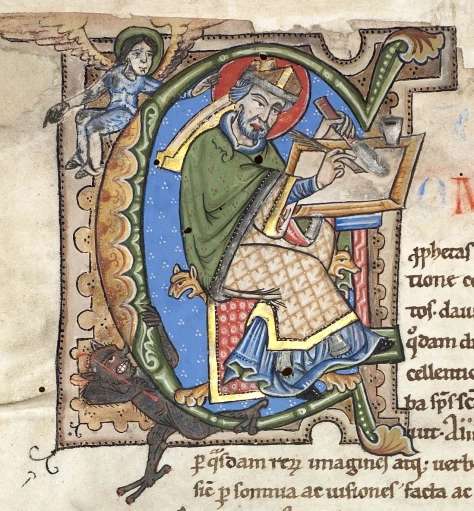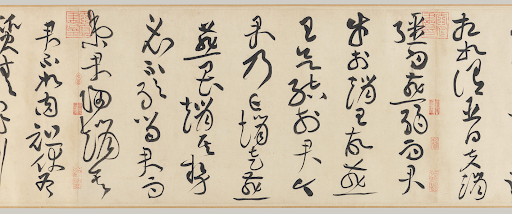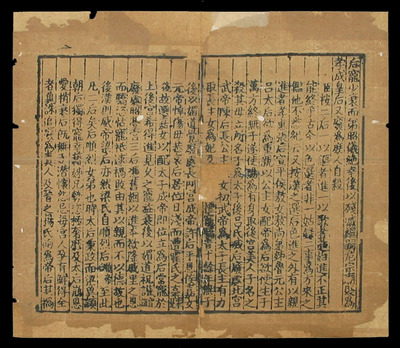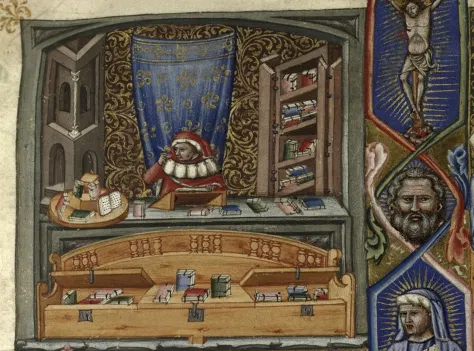
Peter Lombard, bishop of Paris, shown as scribe (Courtesy of Indiana University)

Peter Lombard, bishop of Paris, shown as scribe (Courtesy of Indiana University)
Before Gutenberg's invention, many people were illiterate. Literacy rates were low, and a small portion of the population had books. Upper-class people like the nobles, clergy, and the King had books and were literate. Scholars, scribes, and monks used memorization to store large amounts of information.

Scribes working in a medieval scriptorium, Madrid, Spain, c. 1350 (Courtesy of Dartmouth College)
Books were rare, and most people had never seen a book in their lifetime. In Asia, people developed woodblock printing, which started a century before Gutenberg's press. However, woodblock printing wasn't used a lot in China because of the thousands of characters in the Chinese language. So, Chinese scribes used a different kind of technique, calligraphy.

Biographies of Lian Po and Lin Xiangru. Northern Song dynasty (Courtesy of The Metropolitan Museum Of Art)
"The printing press had not yet been invented and all documents were copied by hand on parchment. Scribes copied thousands of Bibles and classical works for circulation in the Christian areas of Europe."
- Diane Evans

Leaf of Chinese Block printing. Song Dynasty. (Courtesy of Oregon State University Special Collections & Archives Research Center)

Scribe (likely the author Johannes Andreae) at work, surrounded by books. 1320-1340 (Courtesy of Initiale Catalogue de manuscrits enluminés)
The process of making books took weeks to finish. Scribes were to write books by hand, learn to read and write Latin, the language that almost all books were in. When Gutenberg released his press, his methods were quicker, more efficient, and inexpensive than previous methods in Europe and Asia. Nonetheless, scribes lost their jobs as more presses were established throughout Europe.